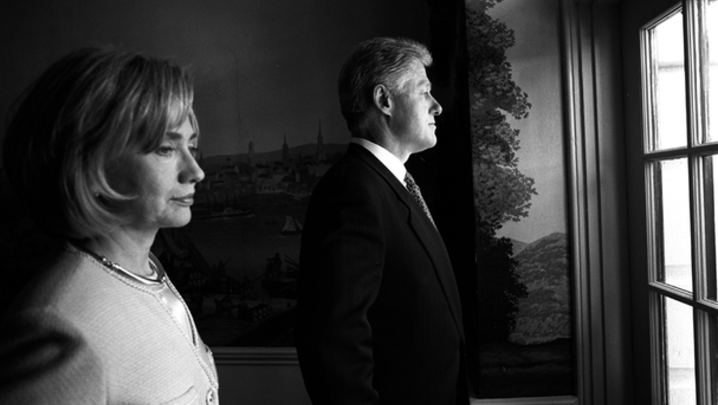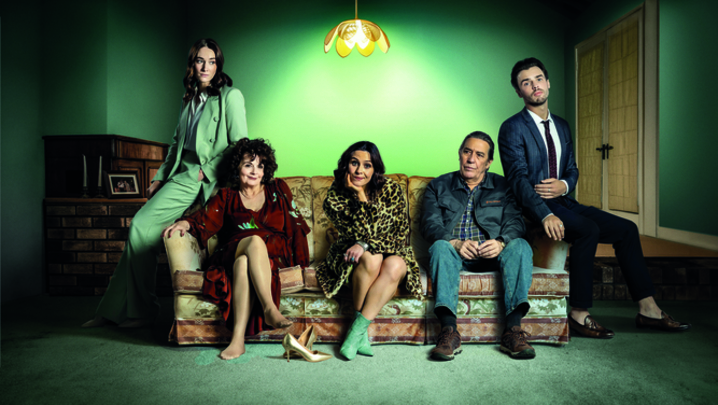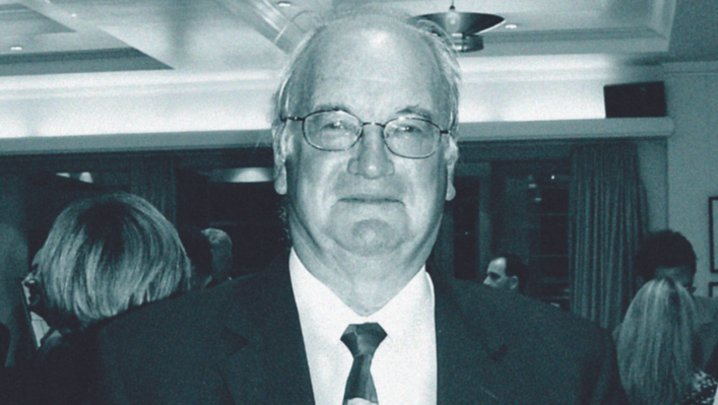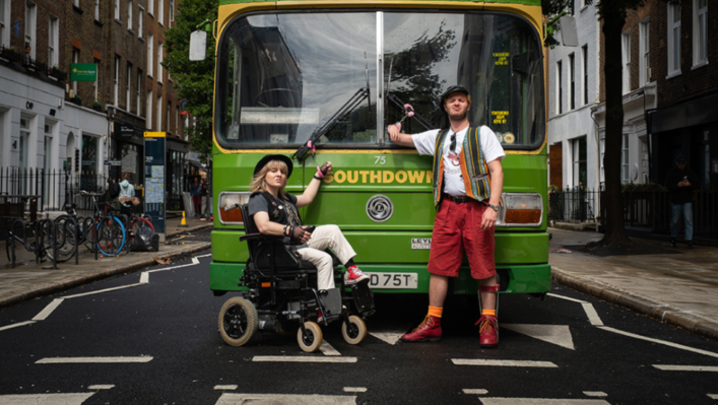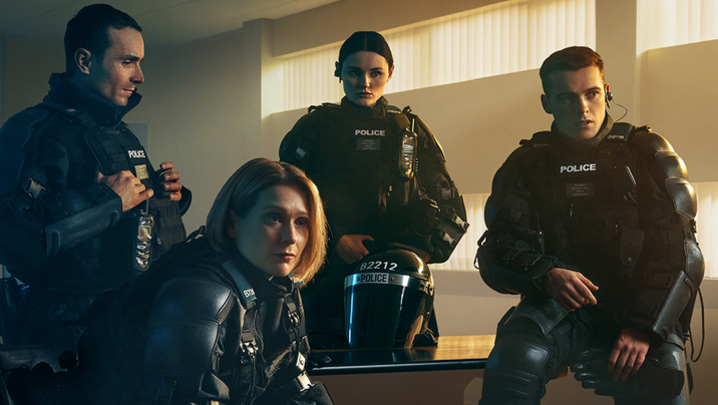Shilpa Ganatra gives a blow-by-blow account of two new documentaries that aim to give a fresh perspective on the pugilistic art
If, this summer, you peruse Sky TV and land on a mixed martial arts (MMA) fight, don’t assume you are watching Sky Sports. Hoping to take advantage of the increasing popularity of full-contact fighting, Sky Documentaries is airing several related programmes for which aficionados will want a ringside seat.
The documentaries shine a light on hidden stories of the sport told through different formats. The Good Fight Club is an observational documentary series that follows members of Team Underground, a London MMA club. Right to Fight, from documentary-maker Raw (The Tinder Swindler, Three Identical Strangers), is a deep dive into the pioneering world of women’s boxing in 1970s America. Also airing later this summer is The Ricky Hatton Story, about the celebrated British boxer.
Together, they exemplify Sky Documentaries’ ambition to provide outstanding, original films; other soon-to-air, long-form content includes films on the Lockerbie tragedy, Greenpeace, and decathlete Daley Thompson, who won two Olympic gold medals.
Poppy Dixon, Sky’s Director of Documentaries and Factual Commissioning, says: “Our tagline for the channel is ‘the story behind the story’ and that encapsulates what we look for: something that goes deeper than the top line, [with] truly original stories that I feel haven’t been seen before.
“Sport is really important to us and for our customers. I’m looking for stories they might not expect to see, that take them to slightly unexpected places, as opposed to the day-to-day sports content you get on Sky Sports.”
Sports documentaries have a rich history and can extend well beyond a specific sport’s niche. They have proved their ability to change the national conversation (as with BBC’s The Real Mo Farah), define key moments in British culture (Gazza, also BBC) and highlight sport’s deeper relevance (Netflix’s Sunderland ’Til I Die).
The Good Fight Club, which is made by Bafta-winning Century Films (Drinking for England, Feltham Sings) is hoping to follow in these illustrious footsteps. The series tracks budding fighters as they tackle the ascent from their south London gym to the spiritual home of MMA in Las Vegas.
The seed of the idea came from Jack Retallack, the series director, who trained at the gym, where he met the motley crew of characters whose journeys we follow.
Dixon says: “Jack and Brian [Hill, executive producer] came to us with this brilliant sizzle, and… pitched it as a kind of Cheer [the 2020 Netflix documentary series on cheerleader squads that became an unlikely sensation) for MMA.” MMA is a solo sport, unlike cheerleading, but, says Dixon: “This group of fighters operates as a team because they’re so invested in each other’s success. That gives it a shape.”
Recorded over eight months last year, each of the four hour-long episodes tracks the team while focusing on two of the fighters. Included are: Kenny, who is also fighting for his father’s approval; Shanelle, who dreams of a better life for herself and her five siblings; and Aidan, who has overcome anorexia with the help of MMA. The series begins with Thomas Paull, who is profoundly deaf.

Liz Biggs, the series producer who also directed two episodes, says: “We meet him in the first episode, where he’s moving out of his home to focus on training. He’s giving everything to this: this is his dream, he has a talent, and he wants to do everything he can to reach that next level.
“Across the series, we see how his career advances, through multiple fights, to the opportunity of a lifetime: a chance to fight at the Ultimate Fighting Championship, the biggest event in the MMA world.
“If we didn’t have the opportunity to follow the fighters over the course of several months, I don’t think we would have been able to see the change in him as both a fighter and a person. It’s all the richer for it.”
Dixon says it was a “no-brainer” to give Biggs and the team the time and budget needed to give the series a fighting chance. Observational documentaries are notoriously risky, requiring sizeable resources. There is no clear structure or guaranteed pay-off. But The Good Fight Club comes with a set of interesting characters, a natural story arc and high stakes. It also helps that it appeals to a younger audience.
“Because it’s an unusual commission for us, in that it’s a fully observational series and not about a famous person, I’m not setting it up against any particular key performance indicators,” says Dixon. “We just want it to do as well as it can, and for people to find it.”
Right to Fight airs later this summer and its format is familiar territory for Sky: it’s a 90-minute documentary that weaves together previously unseen archive footage, intimate interviews and verité film-making. But the subject matter beats a new path, covering the female pioneers of boxing in 1970s America. They were women who battled for the right to fight professionally at a time when it was illegal.
The idea was conceived when Bafta-award-winning director Georgina Cammalleri was working on the Netflix anthology series Bad Sport and was led to archive footage featuring one of these trailblazers, Cat Davis. She says: “It didn’t fit the Netflix brief, but Sky wanted stories from marginalised voices, and so it was a perfect fit with Poppy.”
As this story hadn’t been told in modern times, it took a global search to find the women – who were scattered around the world, from South Africa to California – and time to earn their trust and tease out their stories.
The picture that emerged was one with timely parallels, as the battle for equality in the US intensifies again. In telling their story, Cammalleri focused on the most relatable aspects of her subjects: their frustrations, their flaws and their fighting spirit.
The documentary’s relevance is bolstered by its modern feel. “I wanted something that resonated for today’s audience, so it was important to find stylistic ways of bringing it to the present,” says Cammalleri. “Sometimes, the cutting is quite fast, to keep the energy up. Also, we used the music of [Scottish experimental band] Young Fathers, and the composer worked off of that.”
As this was Cammalleri’s feature-length directorial debut, there were plenty of lessons along the way, not least that a good director relies on a good team. She explains: “When you’re creating your own project, at times you’re desperate to show your voice. Perhaps you’ve had all these years of being the frustrated producer and this is your moment.
“What you realise as soon as you get into that driving seat is how important everyone else is to making that vehicle move. It’s one of those cases where, the more you lean into other people, the greater the film will become.”
The result is a fresh take on 1970s boxing and the second wave of feminism. As Dixon says: “There have been a lot of films about Betty Friedan and Gloria Steinem and feminism in the 1970s. These women were in the same era but didn’t subscribe to that type of feminism. They probably didn’t even call it feminism – they were just doing what they needed to do. That feels fresh and direct, it’s not too ‘thinky,’ it’s pure and emotional.”
Cammalleri agrees: “Most of them are working-class women, and feminism always feels like a middle-class movement. Feeling the fight rather than thinking it is something that stands out.”
In a sport that often comes with prejudices about who the competitors are and where they come from, these alternative stories add a much-needed dimension – and that’s arguably why they carry serious clout.
The Good Fight Club airs on Sky Documentaries from 24 June. Right to Fight airs on 16 July.


